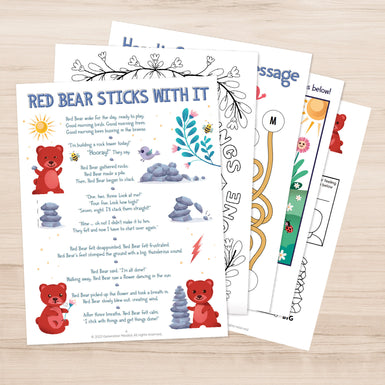When my son was young, I followed the parenting trend of time-outs, isolating him for one minute per age just like the experts suggested. And I didn’t engage with him until the time was up so that he could “sit and think about what he’d done.”
My son responded by attempting to get up countless times, thereby restarting the timer and turning the time-out into a fiasco, or he would shed huge tears, chin quivering, as he sat there looking heartbroken. I didn’t understand at the time that those attempts to get to me were his desperate bids at connection, and his tears were then a grieving acceptance that I had denied him of that very basic need.
Once the time-out had come to an end, conventional wisdom told me that he should have learned his lesson and that he would not repeat the behavior that he’d just been punished for. But that wasn’t the case. Either he’d repeat the same behavior or a new problem would crop up which would require another time-out. Before long, our days consisted of too many time-outs and tears, and I began to search for answers. That’s when I discovered positive parenting, and I began to learn about attachment theory and child development.
Attachment to one’s caregiver is a biological instinct. A threat to that attachment causes alarm in a child’s brain and causes them to seek connection with us to remove that discomfort. However, some common discipline tactics use this need against children, and parents are expected to use attachment as a reward for being good and jerk it away as punishment for being “bad.” This is the basis of time-out. It says to the child, “When you are bad, I do not want you close to me.”
Dr. Gordon Neufeld is a world-renowned psychologist and the founder of The Neufeld Institute. Regarding time-outs, he says, “Time-out has become a panacea for many parents and was originally recommended as a replacement for spanking so that we wouldn’t harm our children. Unfortunately, we didn’t realize what children really needed. The most wounding experience of all is facing separation. If we knew that and understood it, we wouldn’t be using this as punishment.”
Neufeld explains that separation-based discipline calls for strong emotions of alarm which causes all kinds of anxiety problems. It also evokes “intense pursuit”, which seems good to the parent because the child is promising to be good and to never do it again. But parents don’t realize that this is coming from a place of insecurity, making the child responsible for contact and closeness, which is meant to be in the hands of the caregiver, not a burden for children to carry.
Time-outs also generate frustration which gives rise to aggression problems. Neufeld further explains a troubling truth, “If being close to somebody sets them up for separation, the brain can actually reverse the attachment instincts, called defensive attachment, and the child begins to resist contact and closeness, and that injures the relationship tremendously. Children begin to push their parents or caregivers away, saying ‘get away from me’ or ‘leave me alone,’ and when the relationship is damaged in this way, children do not cooperate or listen to us well, thereby making parenting harder.”
Understanding the important role of attachment in child development and the harm of separation-based discipline led to the rise of time-ins. Time-ins help children notice and manage their emotions in the presence of a loving caregiver, a process called co-regulation. Through this relational experience, children build the foundation for future self-regulation. And because children learn best when they are regulated and feel connected to the ones teaching them, time-ins keep the attachment in place while helping the child calm down, which paves the way for optimal learning.
Some question whether time-ins are a reward for bad behavior. We have been so conditioned to believe that misbehaving children do not deserve our love and attention that we actually fear connecting with them in the moments they perhaps need it the most.
As a mother of two who has been practicing positive parenting for 12 years now, let me offer you some encouragement. Time-ins have never resulted in worse behavior. Giving my love has never backfired. By using tools such as the Time-In ToolKit, I was able to teach my children how to name, understand, and deal with emotions as well as how to regulate behavior by discussing the impact their actions had on themselves and others. Once they were calm in the time-in, we were able to problem-solve ways that they could better handle situations.
In using a time-in, my boys learned valuable skills they would never have learned by sitting in a corner. Did this produce perfect children? No, there are no magic bullets. But this did produce securely attached children who no longer had to make desperate bids for the attachment they so instinctively desired, and that is a wonderful thing.




















